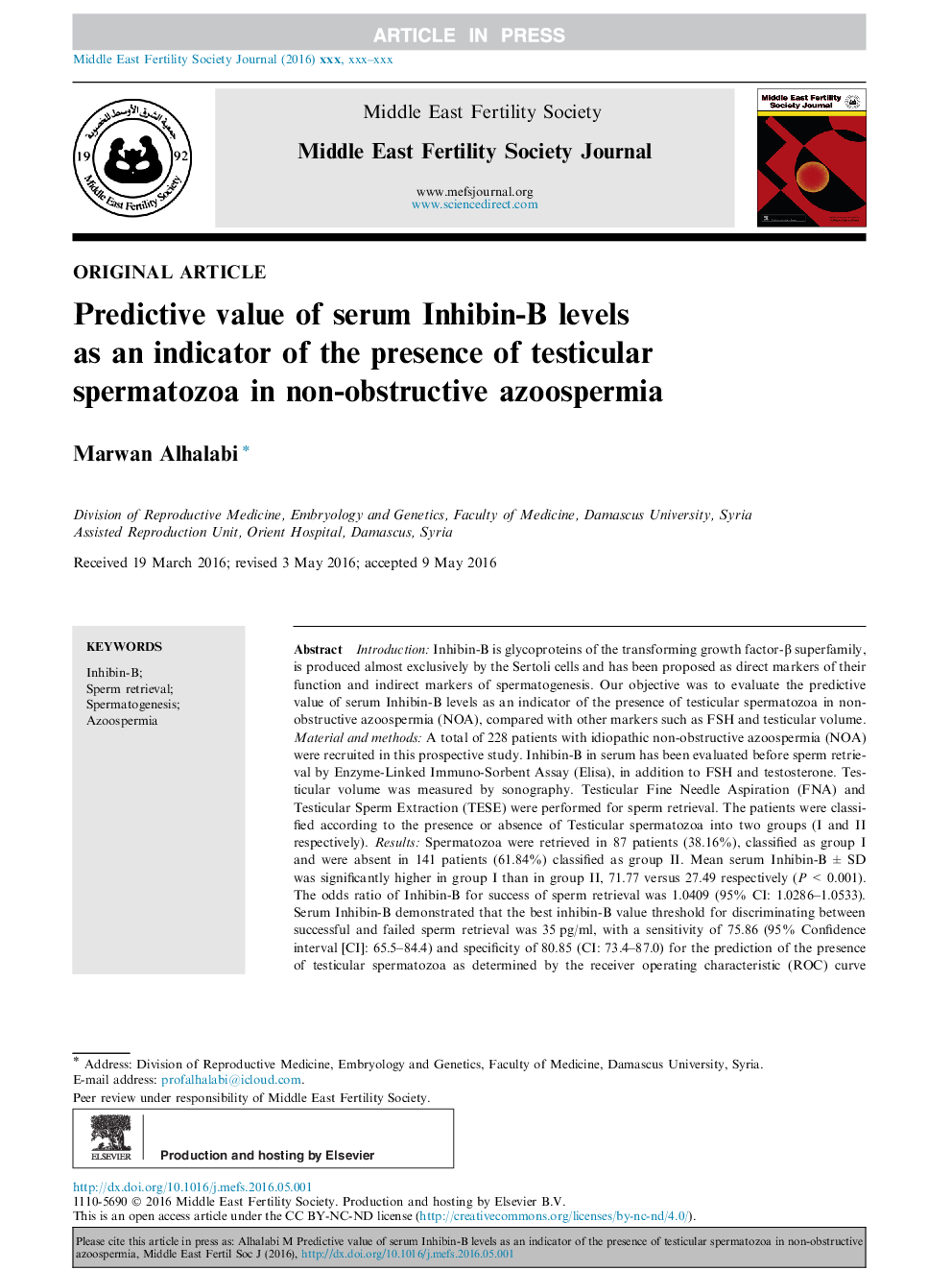| Article ID | Journal | Published Year | Pages | File Type |
|---|---|---|---|---|
| 8783346 | Middle East Fertility Society Journal | 2016 | 7 Pages |
Abstract
Introduction: Inhibin-B is glycoproteins of the transforming growth factor-β superfamily, is produced almost exclusively by the Sertoli cells and has been proposed as direct markers of their function and indirect markers of spermatogenesis. Our objective was to evaluate the predictive value of serum Inhibin-B levels as an indicator of the presence of testicular spermatozoa in non-obstructive azoospermia (NOA), compared with other markers such as FSH and testicular volume. Material and methods: A total of 228 patients with idiopathic non-obstructive azoospermia (NOA) were recruited in this prospective study. Inhibin-B in serum has been evaluated before sperm retrieval by Enzyme-Linked Immuno-Sorbent Assay (Elisa), in addition to FSH and testosterone. Testicular volume was measured by sonography. Testicular Fine Needle Aspiration (FNA) and Testicular Sperm Extraction (TESE) were performed for sperm retrieval. The patients were classified according to the presence or absence of Testicular spermatozoa into two groups (I and II respectively). Results: Spermatozoa were retrieved in 87 patients (38.16%), classified as group I and were absent in 141 patients (61.84%) classified as group II. Mean serum Inhibin-B ± SD was significantly higher in group I than in group II, 71.77 versus 27.49 respectively (P < 0.001). The odds ratio of Inhibin-B for success of sperm retrieval was 1.0409 (95% CI: 1.0286-1.0533). Serum Inhibin-B demonstrated that the best inhibin-B value threshold for discriminating between successful and failed sperm retrieval was 35 pg/ml, with a sensitivity of 75.86 (95% Confidence interval [CI]: 65.5-84.4) and specificity of 80.85 (CI: 73.4-87.0) for the prediction of the presence of testicular spermatozoa as determined by the receiver operating characteristic (ROC) curve analysis and area under curve (AUC). Conclusions: Inhibin-B might be a predictive marker of persistent spermatogenesis in the men with non-obstructive azoospermia.
Related Topics
Health Sciences
Medicine and Dentistry
Obstetrics, Gynecology and Women's Health
Authors
Marwan Alhalabi,
